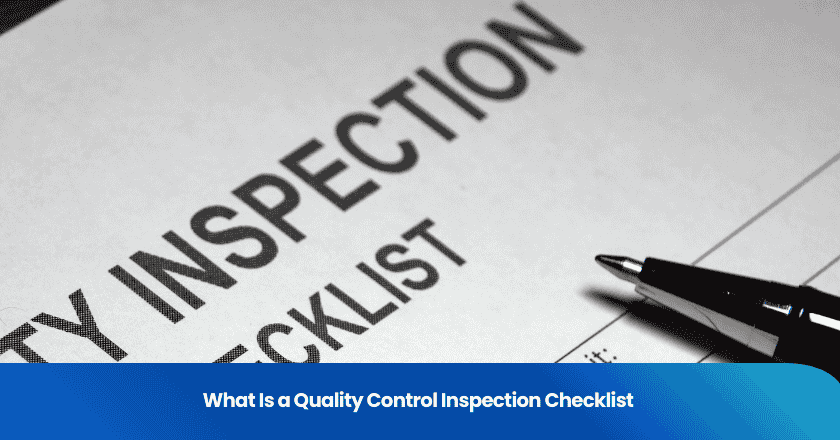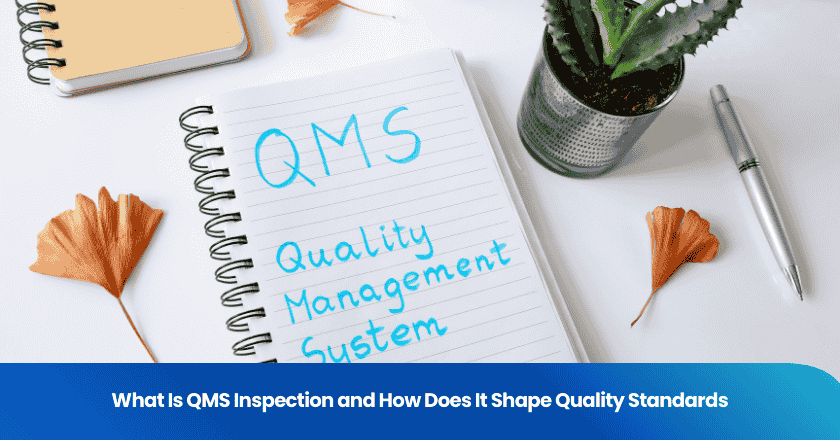
An acceptable quality level sampling plan gives you a systematic way to decide if a batch of products meets your quality standards. You use this approach in quality control to protect your business from costly defects and ensure that customers receive reliable products. Recent industry studies show that intelligent inspection systems and real-time analytics can boost defect detection and improve first-pass yield. Sampling plans also help you find the minimum sample size needed for sound decisions, making your inspections efficient and effective.
Key Takeaways
- An acceptable quality level (AQL) sampling plan helps you decide if a batch of products meets quality standards without inspecting every item.
- Understanding defect classifications—critical, major, and minor—guides your inspection focus and helps prioritize safety and functionality.
- Choosing the right inspection level and sample size is crucial for effective quality control. Use AQL tables to determine these factors based on your product's risk profile.
- Implementing a structured sampling plan can lead to significant efficiency improvements and cost reductions in various industries.
- Documenting inspection results supports traceability and continuous improvement in your quality control processes.
Acceptable quality level sampling plan
Definition and Purpose
You use an acceptable quality level sampling plan to set clear standards for product inspection. International standards, such as ISO 2859 and ANSI ASQ Z1.4, define the acceptable quality level as the worst tolerable process average when you submit a series of lots for acceptance sampling. This means you decide the maximum number of defective items you can accept in a batch before you reject it. The acceptable quality limit sampling approach helps you make these decisions based on statistical principles, not guesswork.
The main purpose of this sampling plan is to help you maintain high product quality while managing inspection resources efficiently. You do not need to inspect every single item in a lot. Instead, you select a sample, inspect it, and use the results to decide if the entire lot meets your standards. This process protects your business from costly defects and ensures your customers receive reliable products.
Tip: By using an acceptable quality level sampling plan, you balance inspection workload with risk management. You validate product quality, reduce costs, and improve operational speed. This approach leads to higher customer satisfaction and better quality control.
Core Principles
You need to understand several core principles to apply an acceptable quality level sampling plan effectively:
- The acceptable quality limit defines the worst tolerable process average for accepting lots. You use this limit to decide if you should accept or reject a batch based on the number and type of defects found.
- You must consider lot size, inspection levels, defect classifications, AQL levels, sample sizes, and acceptance or rejection points. Each factor influences your inspection process.
- The sample size and acceptance or rejection limits change depending on the lot size, inspection level, and acceptable quality limit you choose.
- You classify defects as critical, major, or minor. Each type has a different acceptable quality limit, reflecting its impact on product safety and usability.
The key components of an acceptable quality level sampling plan include:
- The acceptable quality limit, which sets the maximum number of defective items allowed in a sample.
- Defect categories (critical, major, minor) that guide your inspection focus.
- General and special sampling levels, which help you determine the right sample size for your lot.
- A range of AQL levels, from 0.065 to 6.5, that let you adjust the strictness of your inspection.
You can use different sampling methods to ensure unbiased inspection results.
The table below summarizes the main approaches:
| Sampling Method | Description |
|---|---|
| Simple random sampling | Each item in the lot has an equal chance of being selected for inspection. |
| Stratified sampling | You divide the lot into homogeneous subgroups and draw samples from each subgroup. |
| Cluster sampling | You divide the lot into clusters and randomly select clusters for inspection. |
You apply these principles to achieve reliable, consistent, and fair quality control. By following a structured sampling plan, you ensure that your inspection results reflect the true quality of your products.
Defect Types and Acceptable Quality Limit
Critical, Major, Minor Defects
You encounter three main defect classifications during product inspections: critical, major, and minor. Each type affects your decision to accept or reject a batch. Manufacturers and inspectors use these categories to prioritize safety, functionality, and appearance.
| Defect Type | Definition | Examples | Action |
|---|---|---|---|
| Critical | Can cause harm, legal issues, or make the product unusable. | Missing safety feature, sharp edge, wrong material. | Immediate rejection. No compromises. |
| Major | Affects function, fit, or performance but may not be dangerous. | Wrong dimension, poor fitting, color mismatch. | Needs rework or rejection before use. |
| Minor | Does not affect function but may impact appearance or customer perception. | Slight scratch, small paint mark, tiny dent. | May be acceptable depending on tolerance. |
You must reject any batch with critical defects. These issues can lead to unsafe conditions or violate regulations. Major defects reduce usability or cause obvious appearance problems. You may need to rework or reject products with major defects. Minor defects do not affect usability but exceed defined quality standards. You might accept products with minor defects if they meet your tolerance levels.
Note: Defect classifications help you focus your inspection efforts. You protect consumers from harm and maintain product reputation.
Acceptable Quality Limit in Sampling
You apply the acceptable quality limit (AQL) to decide how many defects you can tolerate in a sample. The AQL sets the maximum number of defective items allowed before you reject a batch. You select different AQL values for each defect type. For example, you set the strictest AQL for critical defects, often at zero. You allow a slightly higher AQL for major defects, and the highest for minor defects.
When you inspect a sample, you count the number of defects in each category. If the number of critical defects exceeds the AQL, you reject the lot immediately. If major defects surpass the limit, you may require rework or reject the batch. Minor defects can be present up to the allowed threshold.
You use defect classifications and AQL together to create a balanced inspection process. This approach ensures you maintain safety, functionality, and appearance standards while managing inspection resources efficiently.
Inspection Levels and Sample Size
General vs. Special Sampling Levels
You encounter two main types of inspection levels when setting up your sampling plan: general and special. General inspection levels determine the overall number of units you inspect in a batch. These levels work well for most routine inspections. Special inspection levels, labeled S-1 through S-4, serve specific needs. You use these when you deal with high-value items, have only a few units available, or need to perform tests that are destructive or costly. The stringency increases from S-1 to S-4, so you can adjust the rigor of your inspection based on your requirements.
Special inspection levels are preferred when:
- You inspect high-value items.
- Only a few items are available for inspection.
- You need to increase inspection rigor progressively from S-1 to S-4.
Choosing Inspection Level
You must select the right inspection levels to match your product and risk profile. General inspection levels guide you on how many units to inspect, while special levels focus on smaller sample sizes for targeted tests. When you choose inspection levels, consider the characteristics of your item, related risk factors, customer expectations, and past performance data. Higher-risk products, such as medical devices, require stricter inspection levels and lower AQL thresholds. Lower-risk items allow for more lenient standards. Budget constraints and supplier trustworthiness also influence your decision. If you trust your supplier, you might use less stringent inspection levels.
Tip: Define your inspection level, determine your lot or batch size, and set your AQL for each defect category before starting your inspection.
Determining Sample Size
You determine your sample size by considering several factors. Start with your total population size, then factor in the effect size, statistical power, confidence level, and margin of error. These elements help you set a sample size that balances reliability and efficiency. You can use industry-standard tables to match your inspection levels and lot size to the correct sample size code letter. This process ensures your sampling plan meets best practices and delivers valid, reliable results.
Implementing the Sampling Plan
Step-by-Step Process
You can apply an acceptable quality level sampling plan in your manufacturing environment by following a clear sequence of steps. This process helps you maintain strong quality control and make informed decisions about product batches.
1. Determine Lot Size
Identify the total number of units in your batch. This number sets the foundation for your sampling plan.
2. Select Inspection Level
Choose the appropriate inspection level—General I, II, or III—based on how critical your product is and how strict you want your inspection to be.
3. Define AQL and Refer to Tables
Set your acceptable quality level for each defect type. Use standardized AQL tables to find the correct sample size and acceptance criteria for your chosen inspection level and lot size.
4. Conduct Sampling and Inspection
Randomly select the required number of units. Inspect each item and classify any defects as critical, major, or minor.
5. Make Acceptance Decision
Compare the number of defects found to the acceptance criteria in the AQL table. If defects stay within limits, you accept the batch. If defects exceed limits, you reject it.
Tip: Always record your inspection results and batch disposition decisions. This documentation supports traceability and continuous improvement in quality control.
Practical Example
Imagine you work in electronics manufacturing. You have a batch of 1,000,000 units. You set your acceptable quality level sampling plan with an AQL of 0.050 for critical defects. The AQL table tells you to inspect 273 units. If you find even one critical defect, you must reject the entire lot. This strict approach ensures only high-quality products reach your customers.
In other industries, you might see different results. Automotive manufacturers reduced inspection time by 60% using double sampling for bolts. Pharmaceutical companies cut testing costs by 75% while staying compliant. Food processors sped up their operations by 40% and maintained safety standards. These examples show how a sampling plan can improve efficiency and support quality control across sectors.
You strengthen product quality and guide acceptance decisions by using acceptable quality level sampling plans.
- These plans give you a structured framework for inspections, adjust stringency with different levels, and help you make informed decisions.
- Long-term benefits include lower inspection costs, reliable risk management, and improved resource allocation.
FAQ
What does AQL stand for?
AQL stands for Acceptable Quality Level. You use it to define the maximum number of defective items allowed in a sample before you reject a batch.
How do you choose the right sample size?
You select your sample size based on lot size and inspection level. Use AQL tables to match these factors and find the correct sample size code letter.
Can you use AQL sampling for every product type?
You can apply AQL sampling to most products. However, you should adjust your inspection level and defect classifications to fit your industry and product risk.
What happens if you find more defects than the AQL allows?
You must reject the batch if defects exceed the AQL limit. This process helps you maintain quality standards and protect your customers.
Why do you classify defects as critical, major, or minor?
You classify defects to prioritize safety, function, and appearance. This system helps you focus your inspection and set different acceptance limits for each defect type.
Grow your business with TradeAider Service
Click the button below to directly enter the TradeAider Service System. The simple steps from booking and payment to receiving reports are easy to operate.



